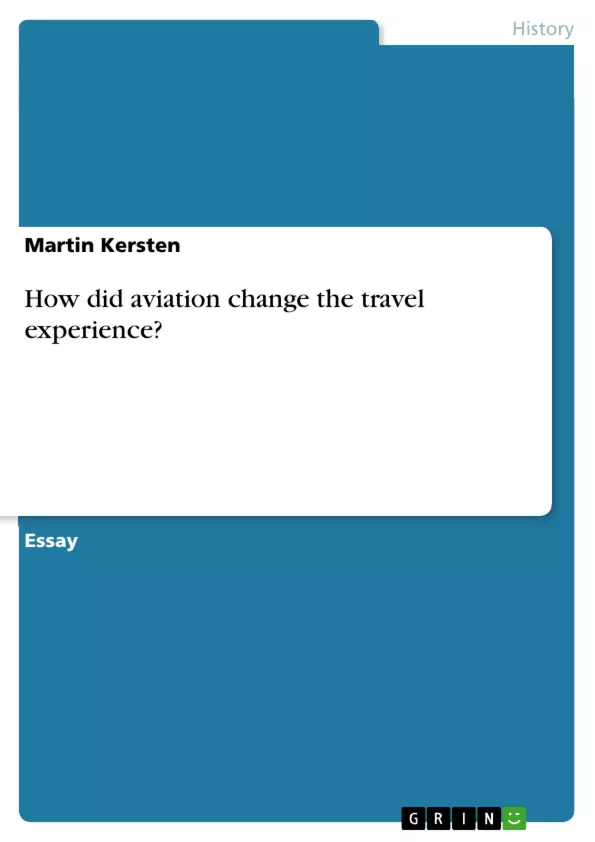This Essay will focus on commercial aviation and traveller’s experience in the late 20th century rather than the very first beginnings of flying in the past centuries. Furthermore when we talk of flights we mostly mean transcontinental flights because within Great Britain passenger air transport is still a minority transport option. Indeed even in the 1990s the proportion of total passenger travel within Britain undertaken by air was still under 1 per cent. Unlike road and rail transport, air transport is the fastest and most costly of all transport modes and it inherently is, like shipping, a long-distance mode.
Inhaltsverzeichnis (Table of Contents)
- Introduction
- Fear of Flying
- The Airport
- The Flight Itself
Zielsetzung und Themenschwerpunkte (Objectives and Key Themes)
This essay explores how aviation has changed the travel experience, specifically focusing on commercial aviation and passenger experiences in the late 20th century. It examines the unique aspects of air travel compared to other modes of transportation, highlighting the impact of technological advancements, safety concerns, and the cultural shift brought about by air travel.
- The evolution of air travel in the late 20th century
- The unique aspects of the air travel experience, including safety concerns and cultural shifts
- The influence of technology on air travel, both positive and negative
- The role of airports and airlines in shaping the passenger experience
- The impact of air travel on societal norms and individual behavior
Zusammenfassung der Kapitel (Chapter Summaries)
- Introduction: This introductory chapter sets the stage by highlighting the historical context of aviation and its evolution as a means of transportation. It discusses the widespread adoption of air travel in the late 20th century, particularly the growth of low-cost airlines and the increasing reliance on air travel for both personal and professional reasons.
- Fear of Flying: This chapter delves into the anxieties associated with air travel, exploring the phenomenon of "aviatophobia" and its various contributing factors. It addresses the fear of terrorism, the feeling of lack of control, and the heightened awareness of risk associated with air travel.
- The Airport: This chapter focuses on the passenger experience at airports, highlighting the challenges and frustrations faced by travelers, such as long security lines, delays, and lost luggage. It also discusses the role of airports and airlines in managing passenger flow and ensuring a positive travel experience.
- The Flight Itself: This chapter examines the unique aspects of the in-flight experience, from the cultural norms and etiquette of air travel to the provision of in-flight services. It explores the impact of air travel on individual behavior and the cultural adjustments that passengers make during their journey.
Schlüsselwörter (Keywords)
This essay explores key concepts related to the transformation of travel experience through aviation, including commercial aviation, passenger experience, fear of flying, airport infrastructure, and in-flight culture. It analyzes the impact of technological advancements, safety concerns, and social norms on air travel in the late 20th century.
- Quote paper
- Martin Kersten (Author), 2011, How did aviation change the travel experience?, Munich, GRIN Verlag, https://www.grin.com/document/164993



